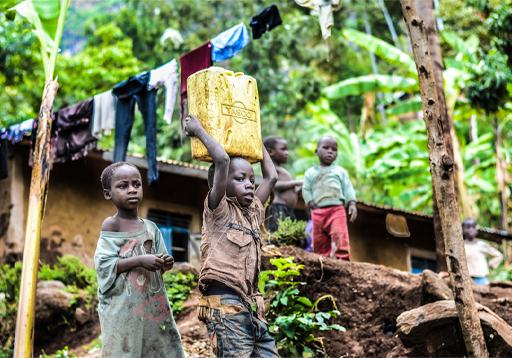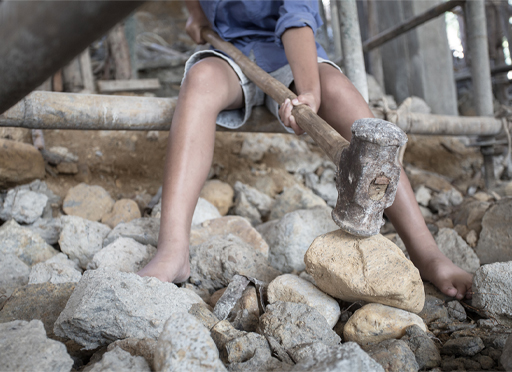2.3 Child labour
According to UNICEF (2017), an estimated 246 million children within the world’s population are engaged in child labour. Furthermore, around one in four children aged 5–17 in the world’s poorest countries are involved in child labour. Child labourers are deemed to be:
- children who are too young to work
- children who are engaged in dangerous or exploitative work that is detrimental to their health and wellbeing.
Such work includes:
Agriculture
Children may:
- be exposed to toxic pesticides or fertilisers
- use dangerous blades and tools
- carry very heavy goods.
Mining
Children may have to:
- use poisonous chemicals
- face risks of mines collapsing
- work with explosives.
Construction
Children may:
- carry heavy loads
- work at heights without safety equipment
- risk injury from dangerous machinery.
Manufacturing
Children may:
- use toxic solvents
- perform repetitive tasks in painful positions
- risk injury from sharp tools.
Domestic work
Children may:
- risk abuse
- work long hours
- often live in isolation away from their families and friends.
Children working in such conditions are essentially being deprived of their right to a ‘playful childhood’ because they are working. They are also more liable to encounter physical, social and psychological stresses that prevent them from interacting and socialising with peers.
Their education is affected because they are subject to disrupted schooling. Such disruption can then have serious consequences in terms of any future opportunity for safer or more financially rewarding employment. This can ultimately decrease their life chances and sense of self-fulfilment.
Low pay, high degrees of responsibility at a young age, lack of access to education as well as insufficient care and protection can all lead to heightened anxiety and lowering children’s self-esteem and feelings of autonomy.
In the next section, you’ll read a case study about Aamira, a refugee from Sudan which, although disturbing, really does stress the reality of some children’s lives.


